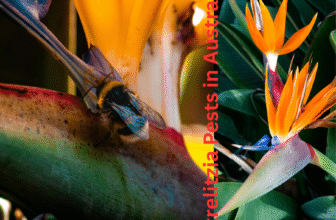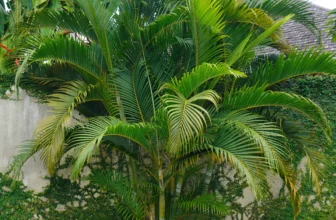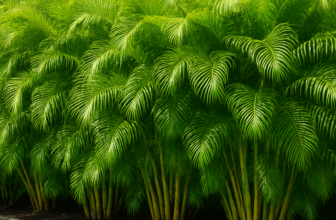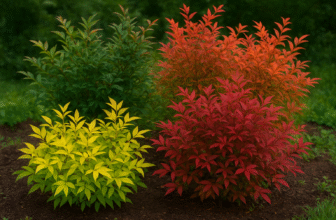Gardengreen.au’s guide will help you to know all about Artificial grass.
The Cheapest Way to Lay Artificial Grass:
Artificial grass is a fantastic way to achieve a lush, green lawn without the hassle of regular maintenance. It’s durable, looks great all year round, and saves money on water and gardening costs. However, the initial cost of installing artificial grass can be daunting. In this guide, Gardengreen will help you find the cheapest way to lay artificial grass.

1. Plan and Prepare
1.1. Do It Yourself (DIY)
- Cost Savings: Hiring professionals can be expensive. Taking on the installation yourself can save you a significant amount of money. With time and effort, you can achieve professional-looking results on a budget, giving you a sense of accomplishment and pride in your home.
- Research and Tools: Before you start, research the process and gather the necessary tools. You’ll need a utility knife, a rake, a broom, and possibly a compactor or tamper. You can often borrow or rent these tools if you don’t own them.

1.2. Measure Your Area
- Accurate Measurements: It is crucial to take precise measurements of your lawn. This will help you determine the exact amount of artificial grass you need, prevent you from purchasing excess material, reduce waste, and ultimately save you money.
2. Choose Budget-Friendly Materials
2.1. Select Affordable Turf
- Type of Turf: Different types of artificial grass have varying prices. The cheapest way to lay artificial grass is for a basic, budget-friendly option that still meets your needs. Look for turf with a shorter pile height and less dense fiber, which can be less expensive but still functional.
- Shop Around: The cheapest way to lay artificial grass is to not settle for the first turf supplier you find. Compare prices from different suppliers and consider buying in bulk if you have a large area to cover. Look for discounts or sales to get the best deal and save money.
2.2. Use Infill Wisely
- Cost-Effective Infill: Infill helps support the grass and keep it upright. Sand is a cost-effective infill option compared to rubber or specialty infills. It provides adequate support and is less expensive.

3. Prepare Your Site
3.1. Remove Existing Grass
- Manual Removal: To save on removal costs, manually remove existing grass and weeds. Use a shovel or garden fork to dig up the old grass and roots. This labor-intensive step is crucial for ensuring a smooth base for your new turf.
3.2. Level the Surface
- DIY Preparation: After removing the old grass, level the surface using a rake and a hand tamper or compactor. This step is important to create an even base for the artificial grass.
3.3. Install a Weed Barrier
- Affordable Weed Barrier: Lay down a weed barrier fabric to prevent weeds from growing through the artificial grass. Weed barrier fabric is relatively inexpensive and prevents future maintenance issues.

4. Install the Turf
4.1. Roll Out and Cut
- Unroll and Cut: Lay the artificial grass over the prepared area. Allow it to settle for a few hours to reduce wrinkles. Use a utility knife to trim the edges and fit the turf around obstacles.
4.2. Secure the Turf
- DIY Securing: Use landscape staples or nails to secure the turf around the edges and seams. Place them about 6 to 8 inches apart. This step prevents the grass from shifting and maintains its appearance.
4.3. Join the Seams
- Simple Seaming: If you have multiple pieces of turf, join them using seam tape and adhesive. Follow the manufacturer’s instructions for applying the adhesive to ensure a strong bond.
5. Apply Infill and Final Touches
5.1. Spread Infill
- Even Distribution: Use a broom or spreader to spread sand infill evenly across the surface. Brush the turf to help distribute the Infill and support the grass fibers.
5.2. Brush and Fluff
- Fluff Up: Use a broom or power brush to lift the grass fibers and make the turf look fuller and more natural. This step helps improve the appearance and extends the life of your artificial grass.
6. Maintain Your New Lawn
6.1. Regular Cleaning
- Basic Maintenance: Regularly remove debris like leaves and branches from the artificial grass. Hose down the turf occasionally to remove dust and dirt.
6.2. Check for Issues
- Inspect and Repair: Periodically check the grass for any signs of wear or damage. Address any issues promptly to keep your lawn looking great.
Cost Breakdown Tips for Laying Artificial Grass
When planning to install artificial grass, understanding the cost breakdown can help you budget effectively and make informed decisions. Here’s a detailed guide to help you understand where your money will go and how to manage costs:
Not all grass is the same!
1. Material Costs
1.1. Artificial Grass
- Price Range: Artificial grass prices vary widely based on quality, density, and pile height. You can expect to pay between $2 to $5 per square foot. Lower-priced options might be suitable for budget projects. At the same time, higher-priced turf often offers better durability and a more realistic look.
- Types: Basic turf is more affordable, while premium options with additional features (like UV resistance or high-density fibers) will cost more.
1.2. Infill Material
- Cost: Infill costs typically range from $0.50 to $2 per square foot. Sand is the most budget-friendly option, while rubber or specialty infills are more expensive.
- Considerations: While sand is cheaper, it may not provide the same cushioning or support as more expensive infills.
1.3. Weed Barrier Fabric
- Price: Weed barrier fabric usually costs between $0.10 and $0.50 per square foot. This is a relatively small expense but essential for preventing weeds from growing through the artificial grass.
Step-by-step process.
2. Preparation Costs
2.1. Site Preparation
- Removal of Old Grass: Manual removal of existing grass and weeds with basic tools like shovels and rakes. If you hire a professional, this cost can range from $0.50 to $1 per square foot.
- Leveling the Surface: If you do this yourself, you might only need to purchase a hand tamper or compactor, which can be rented for $30 to $50 per day. Professional grading can cost between $1 to $2 per square foot.
2.2. Base Materials
- Crushed Stone or Gravel: A stable base is crucial for proper drainage. Depending on the type and depth required, crushed stone or gravel costs between $1 and $3 per square foot.
DIY Vs Professional.
3. Installation Costs
3.1. DIY Installation
- Tools and Supplies: If you’re installing yourself, you’ll need tools like a utility knife, landscape staples, seam tape, and adhesive. Expect to spend around $50 to $100 on these supplies.
- Labor: Doing it yourself saves labor costs, which range from $1 to $3 per square foot if you hire professionals.
3.2. Professional Installation
- Labor Costs: Hiring professionals for installation can cost between $3 to $8 per square foot. This includes labor and the expertise of experienced installers, ensuring a high-quality finish.
Cost estimation
4. Additional Costs
4.1. Transportation
- Delivery Fees: If you’re buying large quantities of artificial grass or base materials, you may need to pay for delivery. Depending on your location and the order size, delivery fees can range from $50 to $150.
4.2. Maintenance Supplies
- Cleaning and Maintenance: Budget for occasional maintenance supplies such as a power broom or cleaning solution. These add an extra $50 to $100 annually.
4.3. Permits
- Local Regulations: Check if your project requires permits. Permit costs vary by location but are generally minimal.
Tips and tricks.
5. Cost-Saving Tips
5.1. Shop Around
- Compare Prices: Get quotes from multiple suppliers and installers to find the best deal on materials and services.
- Look for Discounts: Take advantage of sales, bulk purchase discounts, and special promotions.
5.2. DIY Where Possible
- Save on Labor: The cheapest way to lay artificial grass is to handle as much preparation and installation as possible to reduce labor costs.
5.3. Buy in Bulk
- Purchase Wisely: If you have a large area to cover, buying materials in bulk can often lead to savings.
5.4. Rent Tools
Minimize Tool Costs: Rent tools you’ll only use once rather than buy them outright.
Gardengreen.au offers guideline
Conclusion
With some planning and effort, installing artificial grass on a budget is achievable. By taking a DIY approach, selecting affordable materials, and carefully preparing and installing the turf, you can create a beautiful, low-maintenance lawn without breaking the bank. With these cost-saving tips, you’ll enjoy the benefits of artificial grass while keeping your project within budget.





